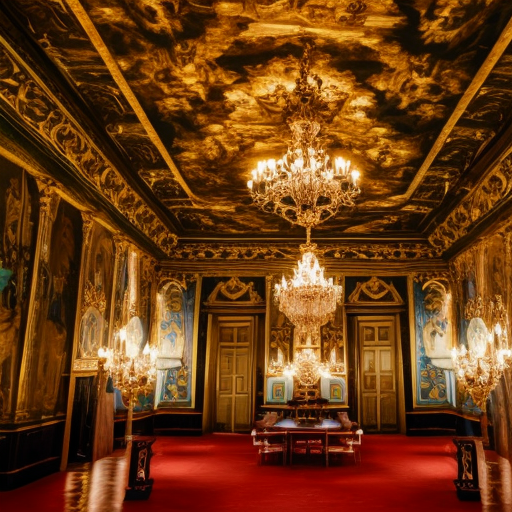Summary: The Baroque period, which spanned from the late 16th century to the early 18th century, was a time of artistic and cultural flourishing characterized by grandeur, drama, and emotional intensity. Baroque art and architecture were marked by ornate details, dynamic compositions, and a desire to evoke strong emotional responses from viewers. This period saw the rise of several influential artists, such as Caravaggio, Bernini, and Bach, who left a lasting impact on the art world.
Art and Architecture:
Baroque art was characterized by its dramatic and theatrical style, with a focus on creating a sense of movement and emotion. Artists often used strong contrasts of light and shadow, known as chiaroscuro, to create a sense of depth and drama. Caravaggio, one of the most renowned Baroque painters, was known for his use of this technique. His works, such as “The Calling of St. Matthew” and “The Conversion of St. Paul,” captured intense moments with a realistic and dramatic approach.
In addition to painting, sculpture also played a significant role in Baroque art. Gian Lorenzo Bernini, an Italian sculptor, was one of the most influential figures of the period. His sculptures, such as “The Ecstasy of Saint Teresa” and “David,” were characterized by their dynamic compositions and emotional intensity. Bernini’s ability to capture movement and express emotion through stone was unparalleled.
Baroque architecture was equally grand and ornate. Buildings were often characterized by their elaborate decorations, intricate details, and dramatic use of light. The Palace of Versailles in France, designed by Louis Le Vau and later expanded by Jules Hardouin-Mansart, is a prime example of Baroque architecture. Its grandeur, extensive gardens, and opulent interiors exemplify the Baroque style.
Music:
Baroque music, with its complex compositions and ornate melodies, is considered one of the most influential periods in the history of Western classical music. Composers such as Johann Sebastian Bach, George Frideric Handel, and Antonio Vivaldi were prominent figures during this time.
Bach’s compositions, such as the Brandenburg Concertos and the Well-Tempered Clavier, showcased his mastery of counterpoint and intricate musical structures. Handel, known for his operas and oratorios, composed iconic works like “Messiah” and “Water Music.” Vivaldi, an Italian composer, is best known for his concertos, particularly “The Four Seasons.”
Baroque music was characterized by its use of elaborate ornamentation, intricate melodies, and the basso continuo, a harmonic framework that provided a foundation for the music. The music of this period often evoked a wide range of emotions, from joy and exuberance to sorrow and contemplation.
Literature:
Baroque literature was characterized by its ornate language, complex metaphors, and exploration of human emotions. Writers often used elaborate descriptions and intricate wordplay to convey their ideas. One of the most notable works of Baroque literature is John Milton’s epic poem “Paradise Lost,” which explores themes of sin, redemption, and the fall of man.
Other prominent Baroque writers include Miguel de Cervantes, known for his novel “Don Quixote,” and John Donne, a metaphysical poet whose works often explored themes of love, religion, and mortality.
Legacy:
The Baroque period left a lasting impact on the art world, influencing subsequent artistic movements such as Rococo and Neoclassicism. Its emphasis on drama, emotion, and grandeur continues to inspire artists to this day. The works of Baroque artists and composers are still celebrated and admired for their technical skill, emotional depth, and timeless beauty.












